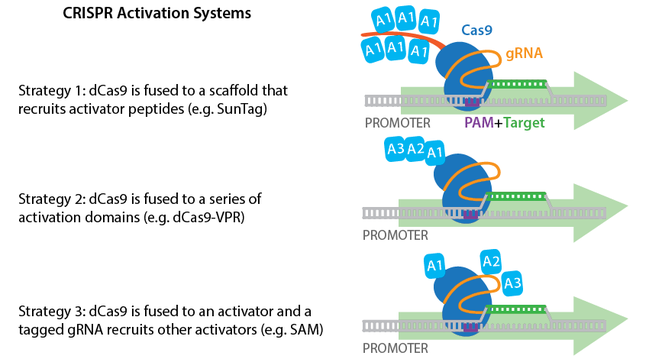CRISPR Plasmids: Activate
Catalytically dead dCas9 fused to a transcriptional activator peptide can increase transcription of a specific gene. Design your gRNA sequence to direct the dCas9-activator to promoter or regulatory regions of your gene of interest. If the plasmid that you choose does not also express a gRNA, you will need to use a separate gRNA expression plasmid to target the dCas9-activator to your specific locus.

Browse, sort, or search the tables below for CRISPR activation plasmids. To learn more about CRISPR activation and other CRISPR topics, read our CRISPR Guide.
Mammalian
| ID | Plasmid | Gene/Insert | Promoter | Selectable Marker | PI | Publication |
|---|
Bacteria
| ID | Plasmid | Gene/Insert | Promoter | PI | Publication |
|---|
Drosophila
| ID | Plasmid | Gene/Insert | Promoter | PI | Publication |
|---|
Plant
| ID | Plasmid | Gene/Insert | Promoter | Selectable Marker | PI | Publication |
|---|
C. elegans
| ID | Plasmid | Gene/Insert | Promoter | PI | Publication |
|---|
Yeast
| ID | Plasmid | Gene/Insert | Promoter | Selectable Marker | PI | Publication |
|---|
CRISPR Resources
Addgene has a large selection of CRISPR plasmids and resources. Find more CRISPR functions along with plasmids categorized by organism by visiting our CRISPR plasmids page. Find a comprehensive list of CRISPR resources by visiting our CRISPR reference page.
Content last reviewed: 17 October 2025
Do you have suggestions for other plasmids that should be added to this list?
Fill out our Suggest a Plasmid form or e-mail [email protected] to help us improve this resource!



